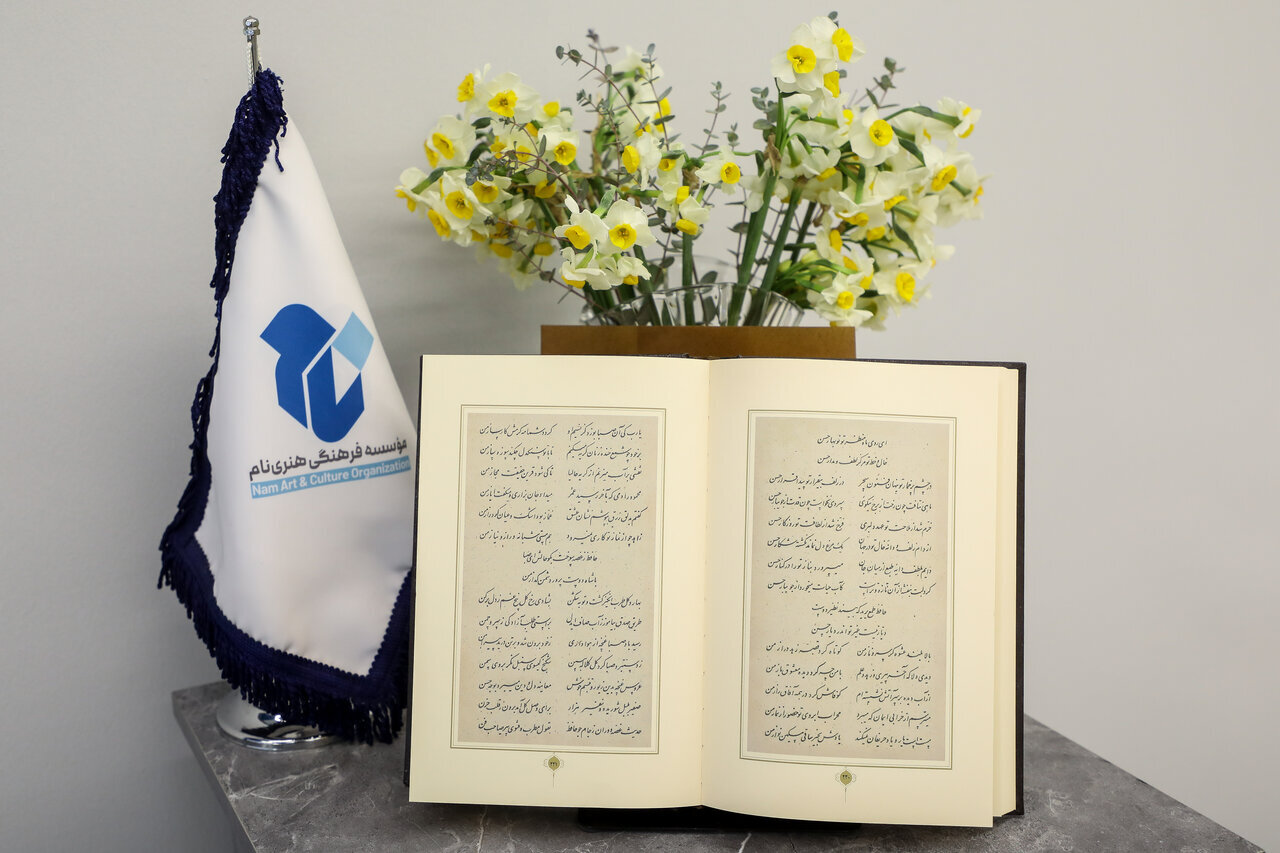Handwritten edition of “Divan of Hafez” by calligrapher Mirza Mohammadreza Kalhor unveiled

TEHRAN-A ceremony was held in Tehran on Wednesday to unveil a rare handwritten edition of “Divan of Hafez” by the renowned calligrapher Mirza Mohammadreza Kalhor.
Prominent figures in Persian calligraphy, including Gholamhossein Amirkhani, Ali Shirazi, Mojtaba Malekzadeh, Mohammad Heydari, and Hamid Ajami attended the event among others, ISNA reported. It took place on Wednesday, December 19th, at the Gallery of the Nam Art and Culture Organization, ISNA reported.
This unique edition was published through a collaboration between the Nam Art and Culture Organization and Aban Publication. The original manuscript, preserved in the treasury of the Visual Arts Center of the Art Bureau, is considered a masterpiece of Kalhor's art. The publication was supervised by Amir Abdolhosseini and aimed to make such artistic treasures more accessible to the public.
Speaking at the session, several figures highlighted Kalhor's pivotal role in the evolution of Persian calligraphy. Gholamhossein Amirkhani praised collectors and institutions for preserving such works, emphasizing that these efforts enable the continued appreciation of calligraphy in modern times. Ali Shirazi noted that the publication of this manuscript marks a significant milestone in Persian calligraphy.
Mirza Mohammadreza Kalhor (1829-1892) was a 19th-century Iranian calligrapher, known for his mastery of the Nastaʿlīq script technique.
A member of the Kurdish Kalhor tribe of Kermanshah, he initially followed the typical tribal path, learning horsemanship and sharpshooting. He gained an interest in calligraphy as a child and left the tribe for further training. During his career, he introduced several innovations to Nastaʿlīq calligraphy, changing both the aesthetics and mechanics of the technique.
Kalhor modified and adapted Nastaʿlīq to be easily used with printing machines and newspaper lithography, which in turn helped the wide dissemination of his transcripts. He also devised methods for teaching Nastaʿlīq and specified clear proportional rules for it, which many could follow.
On a number of occasions, Kalhor also produced some books in two different fashions, one using the printing press and one by writing in resin gum ink.
Kalhor’s widespread fame as a master calligrapher soon attracted the attention of Nāṣer-al-Din Shah, who invited Kalhor to train him and later offered him a position in the Bureau of Publications. He declined the offer despite his limited financial resources and instead decided to earn his livelihood by private practice, volunteering his services to the bureau only on an occasional basis. This left him ample time to perfect his skills and train young calligraphers.
In 1883, he was invited to join the royal entourage on a journey to Khorasan. Kalhor, a devout Shiʿite, saw the trip as an opportunity to visit the holy shrine in Mashhad. Kalhor also produced a large number of unsigned exercise or siāh-mašq pages and only a couple of finished calligraphic specimens. His passion for the excellence of his art drove him to spend countless hours, and sometimes-sleepless nights, practicing (mašq). His siāh-mašq pages were known to be so heavily worked that the original color of the paper was often entirely concealed.
Kalhor’s contributions to Persian calligraphy serve as a testament to the innovative spirit of 19th-century Persian calligraphers who, while working within the parameters of the canon, often took liberties in introducing innovations with long-lasting effects.
SS/SAB
